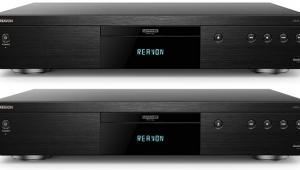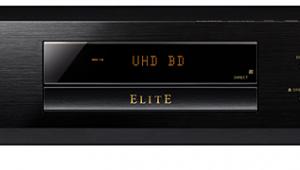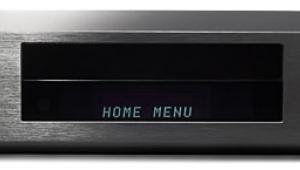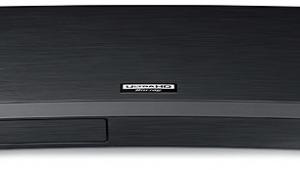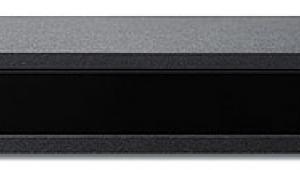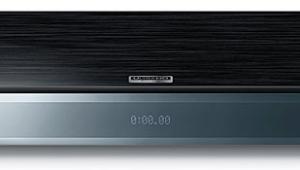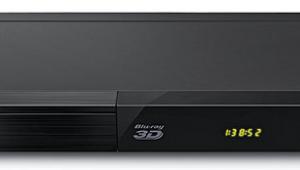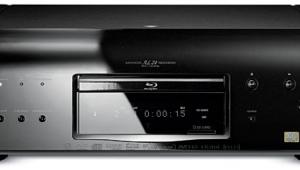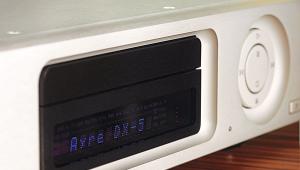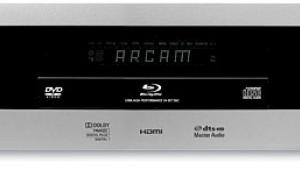Oppo UDP-203 Ultra HD Blu-ray Player Review

AT A GLANCE
Plus
Outstanding overall performance
Detailed info screen
Plays virtually everything
Minus
No headphone output
No support for HDCD
THE VERDICT
Oppo’s first Ultra HD Blu-ray player has been eagerly anticipated by UHD enthusiasts everywhere. The wait was worth it.
We’re now into the second year of the Ultra HD Blu-ray era, but up to this past January, Samsung, Philips, and Panasonic pretty much had the UHD player market all to themselves. That month’s Consumer Electronics Show, however, saw the introduction of models from LG and Sony, together with new ones from Samsung and Panasonic.
Still, the player that has been eagerly anticipated by videophiles in the know is the Oppo. Why? Because Oppo has carved out an enviable niche for itself in a market largely ignored by the majors—charging slightly more for disc players that do virtually everything an audio/video enthusiast could want, and typically offering superb build quality, to boot.
No question that the first Ultra HD Blu-ray models we reviewed from those mass-market makers handled their prime directives exceptionally well, offering sterling performance at a value-oriented price with UHD Blu-rays (with HDR), standard Blu-rays, and even DVDs. And for most users, they were adequate for audio CDs—though neither the Samsung nor the Philips offered the preferred coaxial digital output for two-channel CD playback (I had to rough it with Toslink optical and HDMI).
Features
The Oppo UDP-203 offers far too much to cover entirely in this review. The thorough, easy-to-follow, and printed (hooray) manual (which you can download to investigate before a potential purchase) runs 91 pages. I’ll do my best here to keep it short.
For starters, I’ll answer what may be the most important question: Does the Oppo handle both major HDR formats? It fully supports HDR10, and the player’s existing hardware is ready for Dolby Vision as well. But the Dolby Vision firmware remains to be completed. When it’s ready, Oppo will provide it as an update. By that time (hopefully), there should be Ultra HD Blu-rays with Dolby Vision on the market. (At present, all HDR-enhanced discs are HDR10 only.)
Physically, the UDP-203 resembles Oppo’s BDP-103 player. It’s a solid piece, bling-free but in no way looking cheesy or cheap. The front panel includes the power switch, navigation and open/close buttons, a USB 2.0 input, the disc drawer, and a remarkably thorough display, with indicators for virtually all of the sources the player can accommodate: HDR, UHD, Dolby Digital, Dolby TrueHD, DTS-HD Master Audio, PCM, DSD, and more.

There’s no headphone jack, which might be an issue for some. Nor is there support for CDs encoded with HDCD, a relatively obscure enhancement that Oppo’s BDP-103 and BDP-105 do decode. Admittedly, most disc players don’t offer either feature, but the BDP-105 does have a headphone output. Oppo plans to release the flagship UHD-205 this year (perhaps by the time you read this), and it might offer one or both of those features. Since Oppo’s remote control has a volume control, and since headphones are the hottest segment of the audio market, a headphone jack would be a logical feature to add.
Around back, you’ll find two HDMI outputs (one dedicated to audio), two USB 3.0 ports, a LAN port, optical and coaxial digital outputs, and 7.1-channel analog RCA outputs for 7.1-, 5.1-, or 2.0-channel playback. There’s also an HDMI input for external devices. The analog outputs offer five different digital-filter characteristics for the player’s DACs.
Oppo has elected not to include streaming apps in the player itself. This is a defendable position, given the rapid changes in the streaming video market and the low prices of suitable outboard devices from Roku, Apple TV, and others.
Besides playing Ultra HD Blu-rays, the Oppo will handle most any disc you’re likely to encounter, includ- ing standard Blu-ray, Blu-ray 3D, DVD-Video, DVD-Audio, SACD, and CD. Among the few it won’t play, the types you’re most likely to encounter are HD DVDs and any standard Blu-rays or DVDs produced for playback outside of your Oppo’s region code.
There’s nothing unusual in connecting and configuring the UDP-203. But fans of high-resolution audio should take note: Formats such as DTS-HD Master Audio and Dolby TrueHD can be accessed via HDMI or the 7.1-channel analog output (with decoding handled internally), though their attendant Atmos and DTS:X extensions are only available via HDMI. In addition, SACDs can be played back only through either the HDMI or the analog outputs, not the coaxial or optical digital outputs. (The latter can play only the CD layer of hybrid SACDs and, of course, standard CDs and plain-vanilla Dolby Digital and DTS.)

While the UDP-203 has no internal video-streaming apps, it can connect to your home network either wired (via Ethernet) or wirelessly, so you can run your own audio, video, or photo files through the player. You can also access the internet via either route for player firmware updates and BD-Live material. (Newbies may be excused if the latter feature is a mystery to you, as we’ve seen neither hide nor hair of BD-Live in years.)
The remote is virtually identical to the one that comes with Oppo’s 1080p Blu-ray players. It’s among the best in the business, with comfortably sized and well-spaced backlit buttons capable of controlling all of the player’s functions. I’m particularly impressed by the Info button, which provides the basic disc information with a quick touch. But hold the button a little longer, and all sorts of information pops up, including both what’s on the disc and what’s actually being output by the player. (The disc content and the player output, by design, aren’t always the same, as the player often performs processing for a number of reasons, including to conform to what the display can accept.) Videophiles eat up this sort of thing, but it can be reassuring even to the average user to know what’s being sent to the display.
You also get a Pure Audio mode that shuts off all of the video circuitry. And in addition to the wired or wireless connection to your home network, you can play back audio and video digital-media files (music, movies, and photos) stored on a USB drive (including a USB flash drive) connected to one of the player’s three USB ports.

